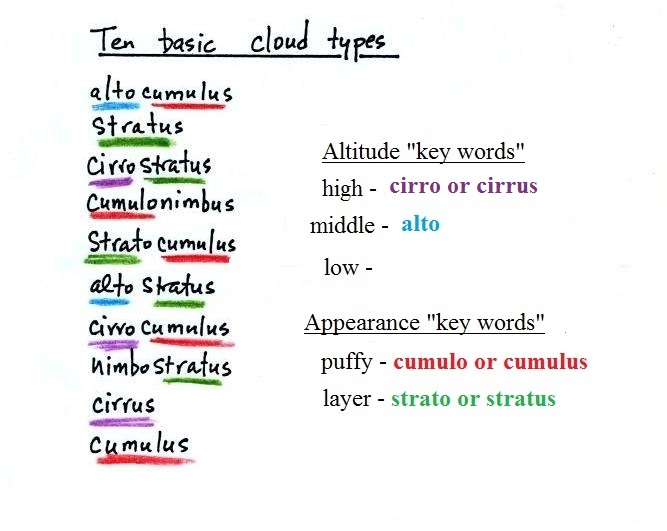

I'm hoping you'll try to learn
these 10 cloud names. There is a smart and a
not-so-smart way of learning these names. The
not-so-smart way is to just memorize them. Because
they all sound alike you will inevitably get them mixed
up. In addition to learning the names, I'm hoping
you'll be able to sketch each of the clouds and describe
them in words. That gets to be a lot of material
to try to just memorize.
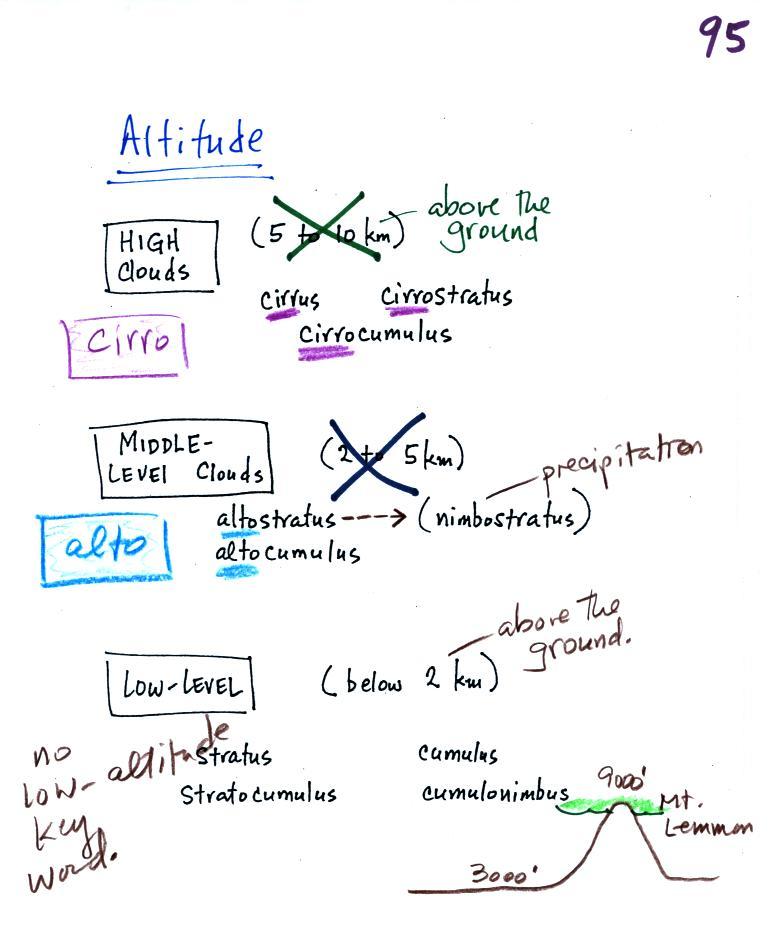
Clouds are grouped into one of three altitude
categories: high, middle level, and low. It is very hard to just look up in
the sky and determine a cloud's altitude. You will
need to look for other clues to distinguish
between high and middle altitude clouds. We'll
learn about some of the clues when we look at cloud
pictures.
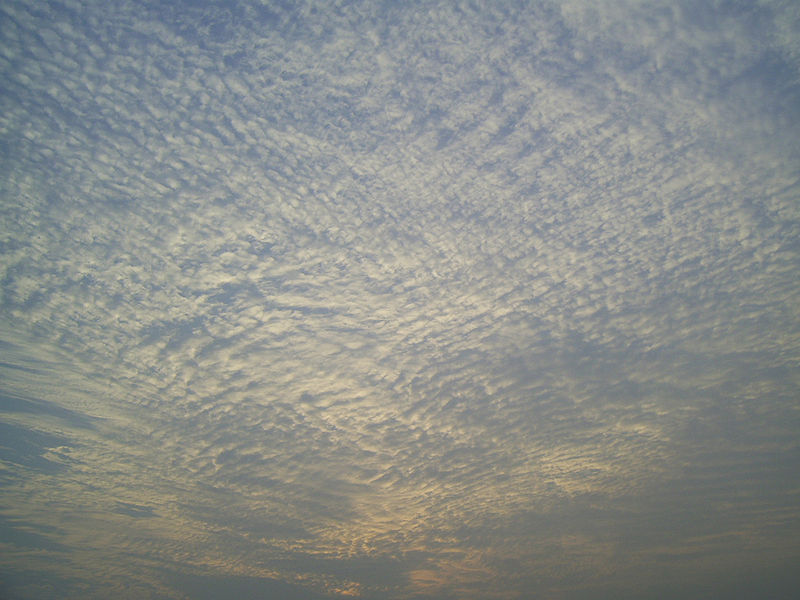 |
high altitude cloud the patches of cloud are small because they are far away. This is a cirrocumulus cloud, cirro means high altitude, cumulus means "patchy". The air is cold at high altitude and doesn't contain much water vapor. High altitude clouds are thin, there's not much raw material available to make the cloud. |
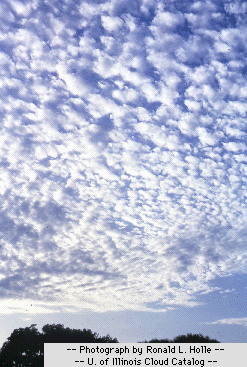 |
middle altitude cloud the patches of cloud are bigger because they closer to the ground. This is an altocumulus cloud. |
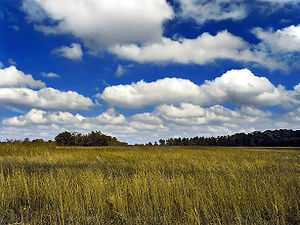 |
low altitude cloud cumulus clouds (there is no key word for low altitude) |
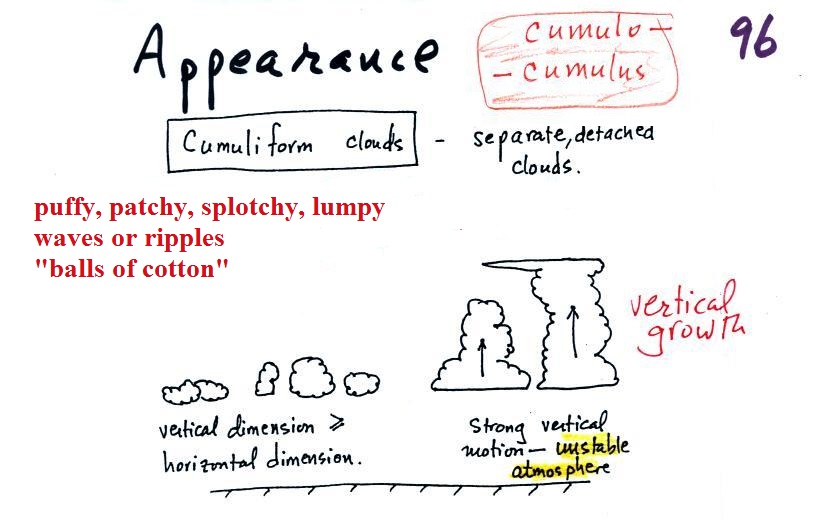
Cumulus clouds are often described as resembling a
head of cauliflower. Clouds can have a patchy of puffy
(or lumpy, wavy, splotchy or ripply) appearance. These
are cumuliform clouds and will have cumulo or
cumulus in their name. These clouds are
as tall or taller than they are across, in an unstable
atmosphere cumuliform clouds will grow vertically and turn
into thunderstorms. Strong thunderstorms can produce
dangerous weather.
Here
are some examples of the different textures or features that
characterize cumuliform clouds:
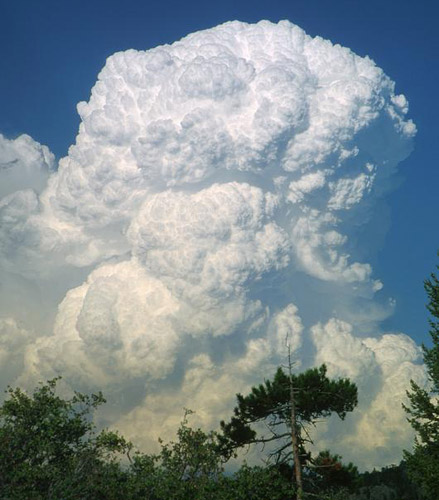 |
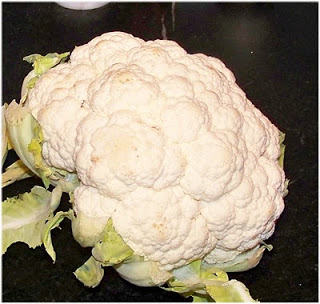 Head of cauliflower source |
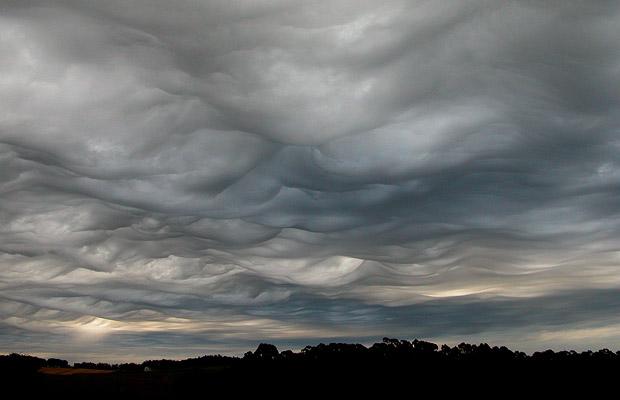 |
 |
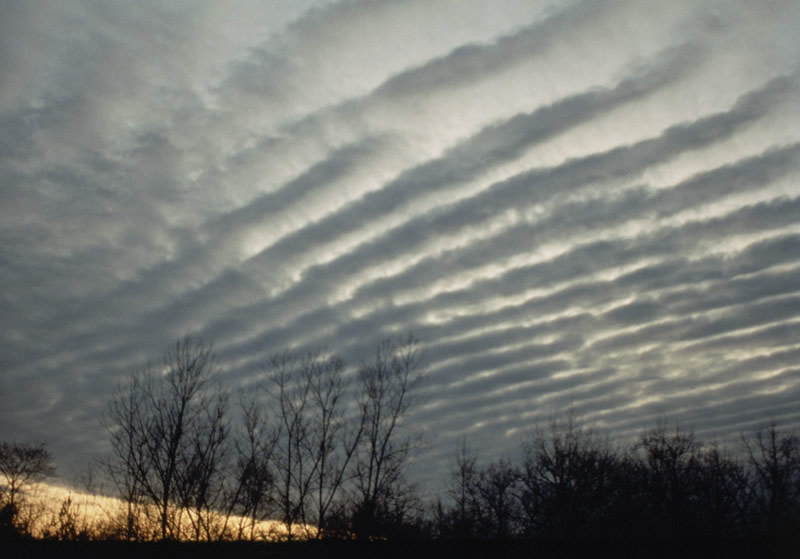 |
This is probably a
middle or high level cloud because the ripples are
smaller (higher and further away)
source |
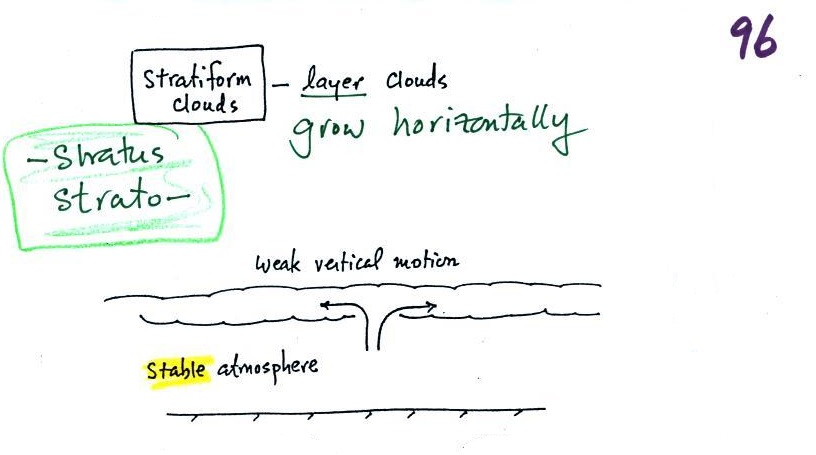
 |
|
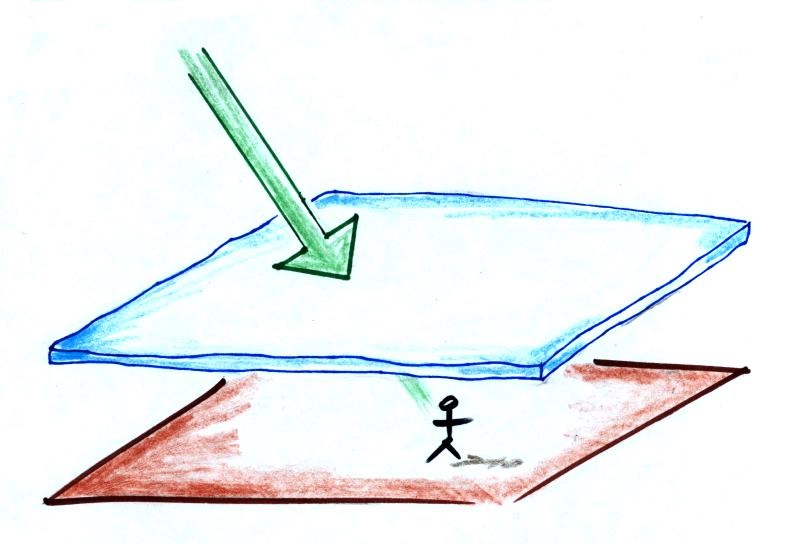 A side view of a layer cloud. How much sunlight is able to shine through the cloud depends on how thick the cloud is (and is a clue about the cloud's altitude). A person on the ground may or may not cast a shadow. |
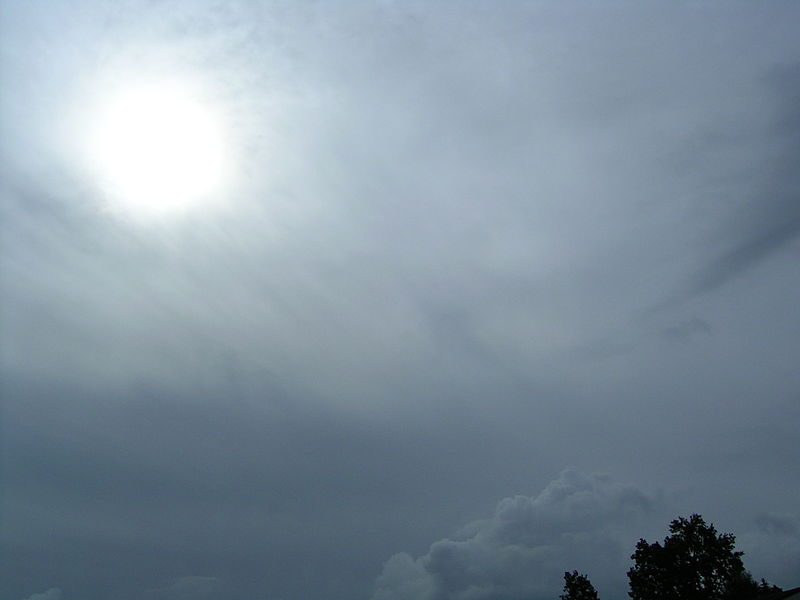 A view from the ground looking up
at the sun through a middle level layer cloud. The
sun is visible but blurred. (source)
|
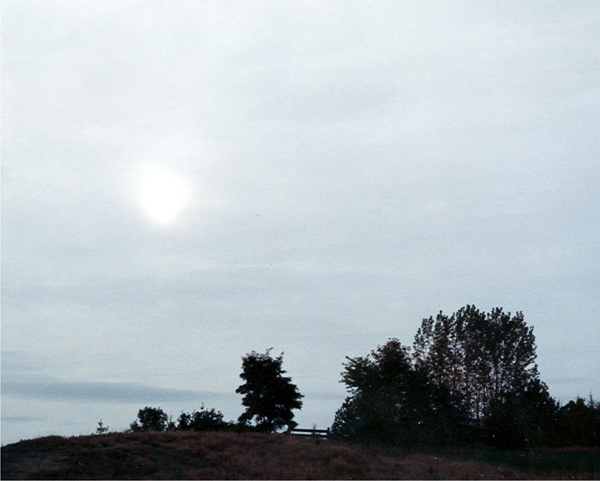 |
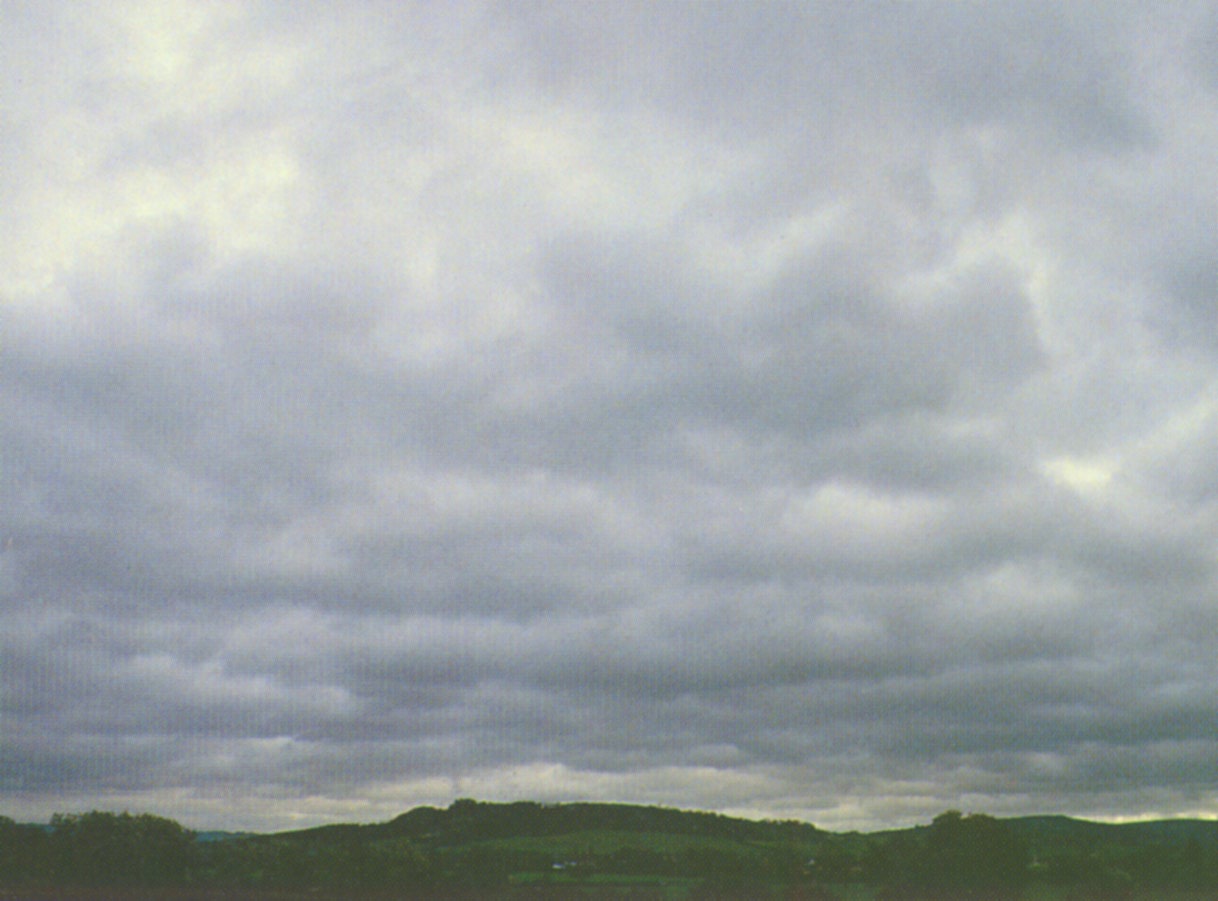 |
 |
| featureless Stratiform
cloud (layer cloud) an altostratus cloud |
an in between
case, a "lumpy layer cloud" this is named stratocumulus |
patchy, puffy Cumuliform
cloud cumulus clouds |
 |
| cirriform is sometimes used as an appearance key word this is a cirrus cloud source of this image |
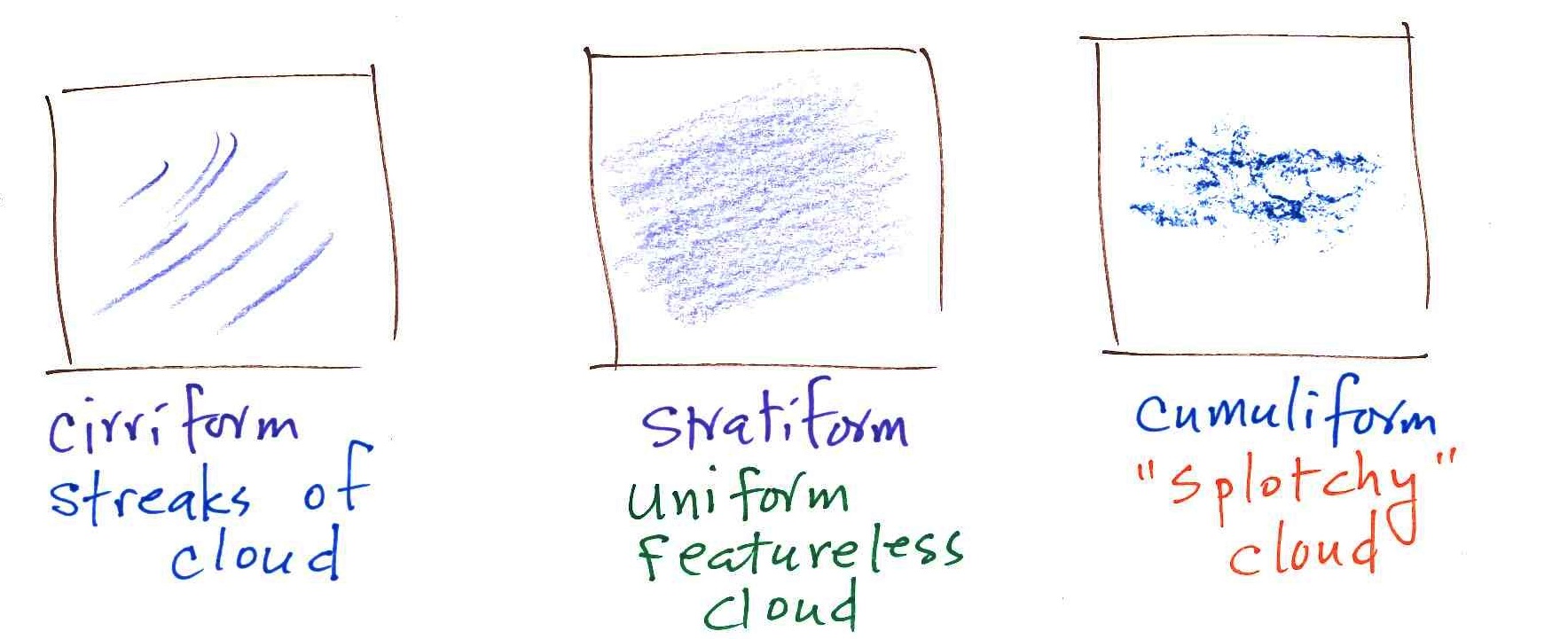
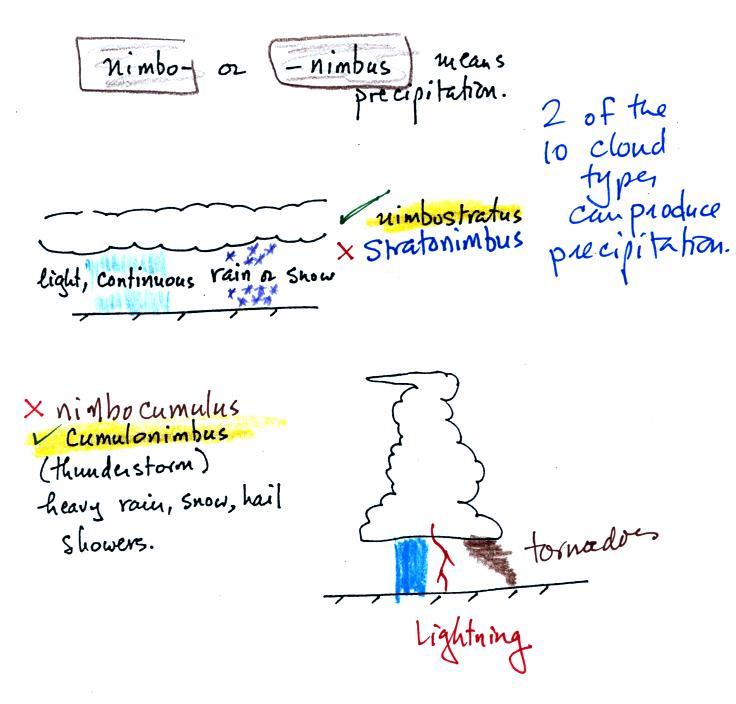
Nimbo or
nimbus, means precipitation (it is also the name of a local brewing company).
Only two of the 10 cloud types are able to produce
(significant amounts of) precipitation. It's not as easy
as you might think to make precipitation. We'll start to
look at precipitation producing processes in the next class.
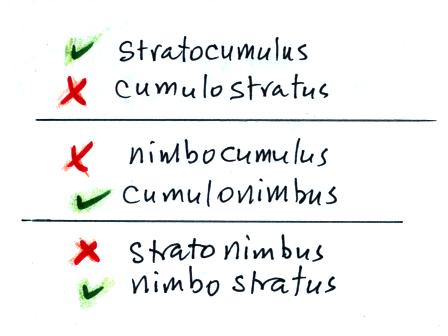
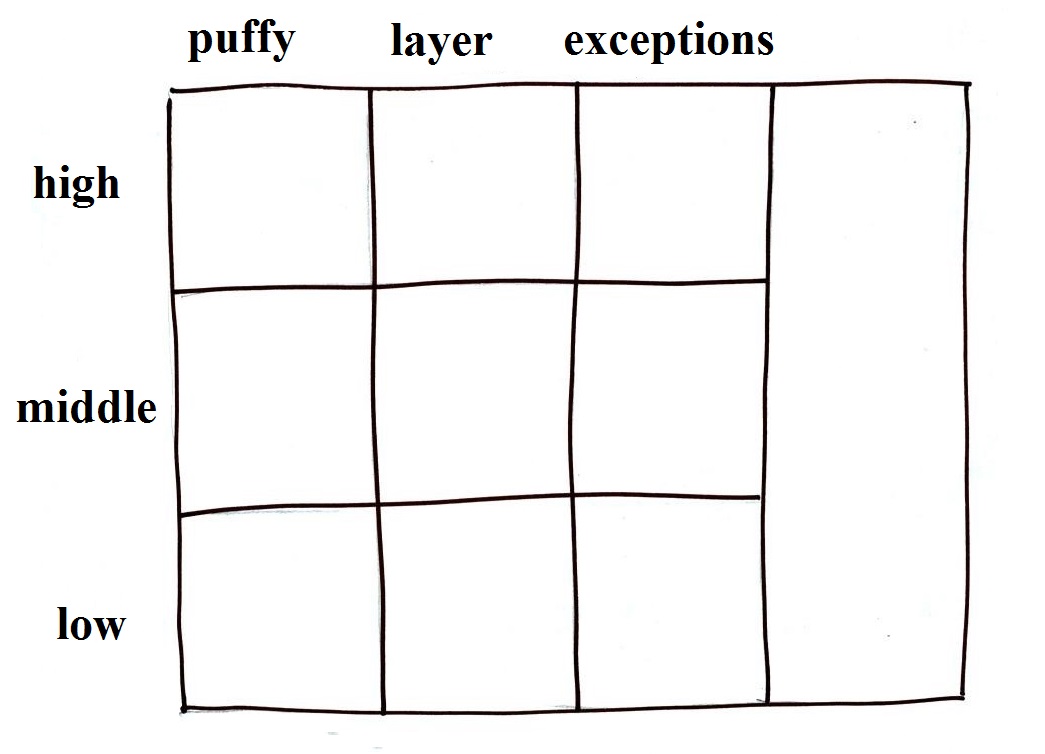 |
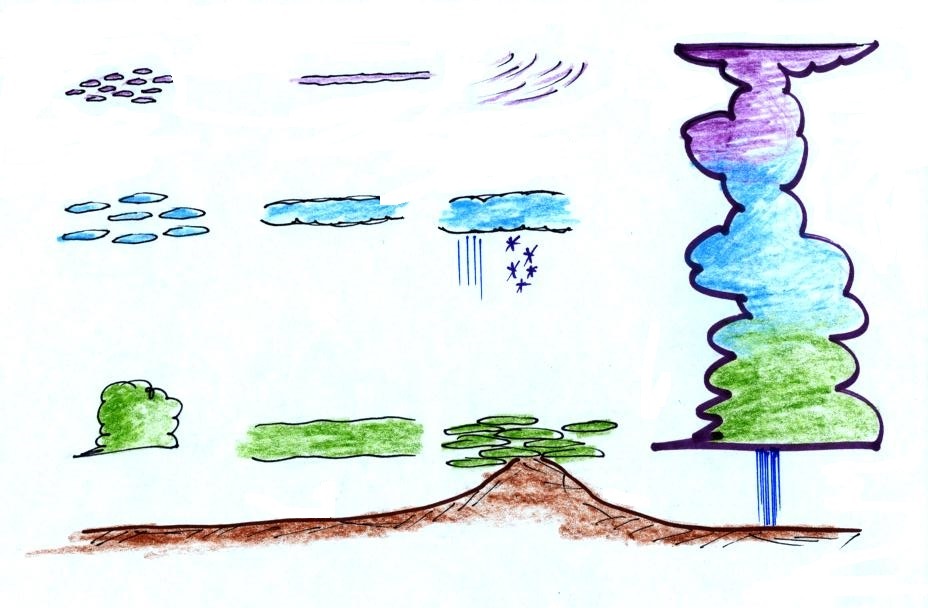 |

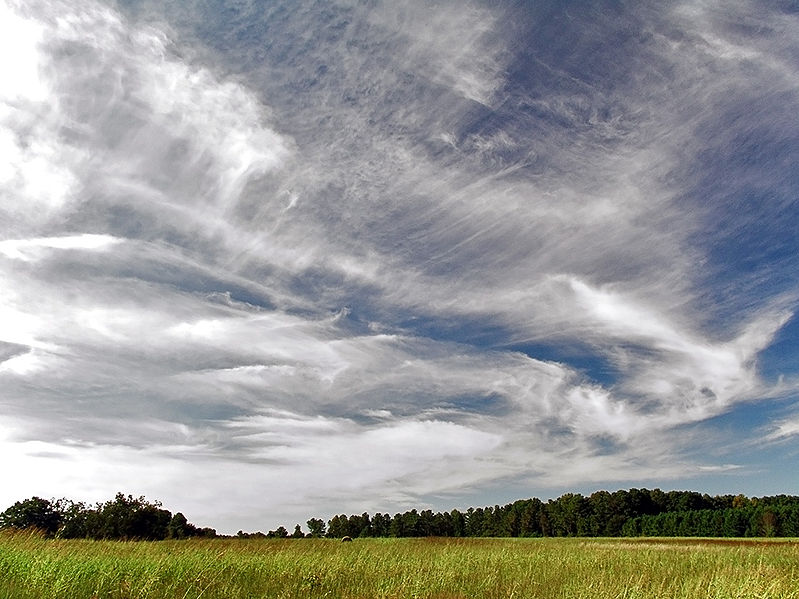 |
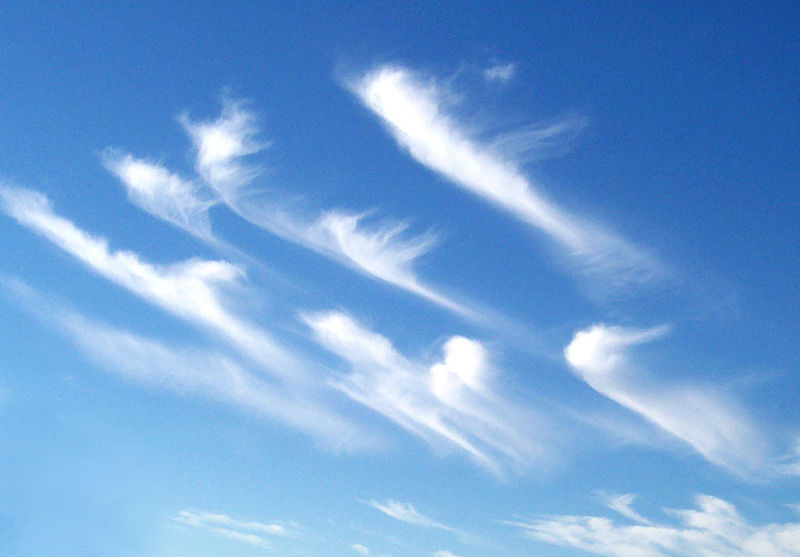 |
 |

A
cirrostratus cloud is a thin uniform white layer cloud (not
purple as shown in the figure) covering part or all of the
sky. They're so thin you can sometimes see blue sky
through the cloud layer. Haloes are a pretty sure
indication that a cirrostratus cloud is overhead.
If you were painting Cs clouds you could dip a broad brush
in watered down white paint and then paint back and forth
across the canvas. Look
down at your feet and see if your body is casting a
shadow.
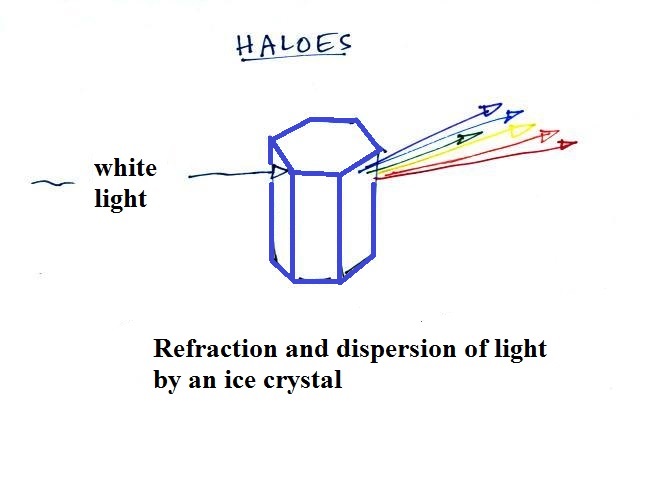
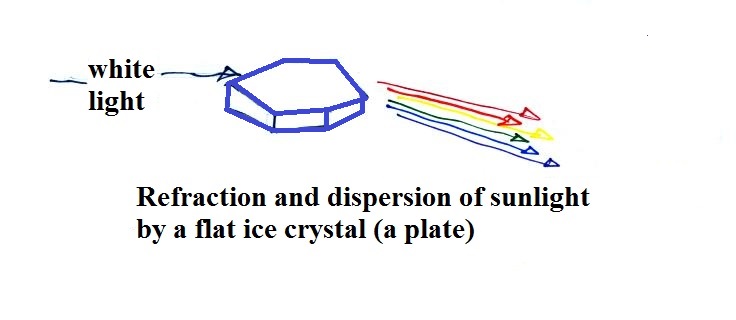
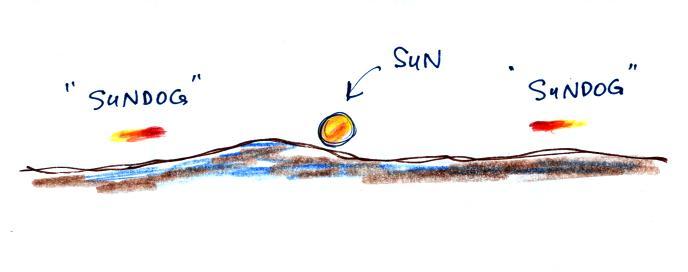
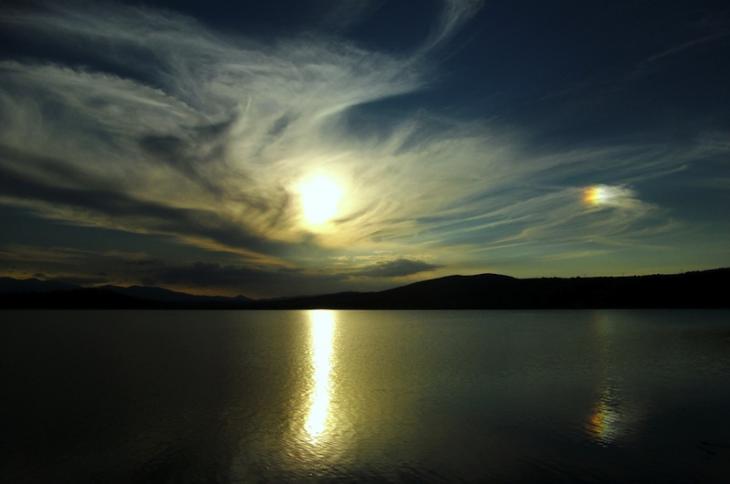
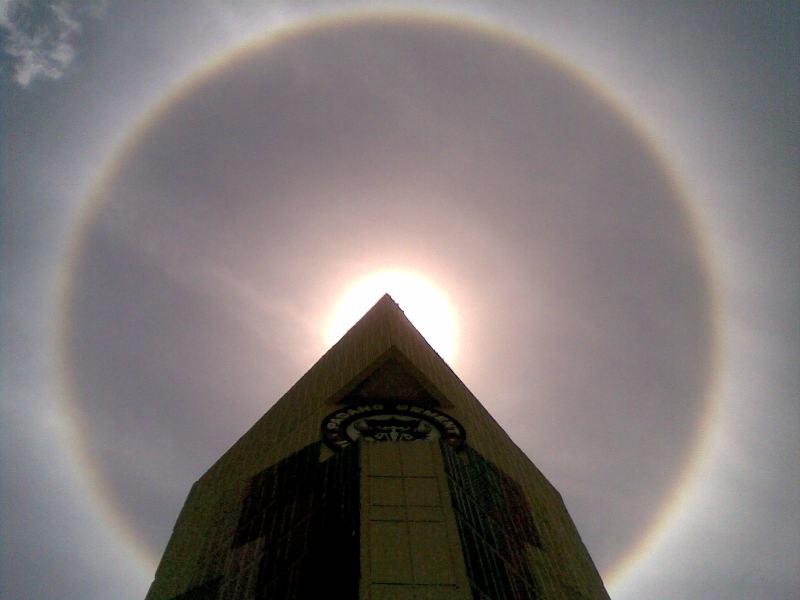 |
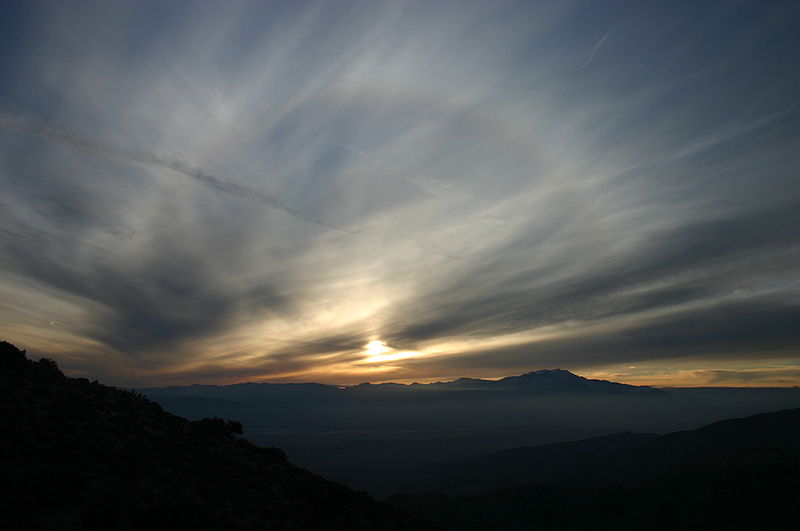 |
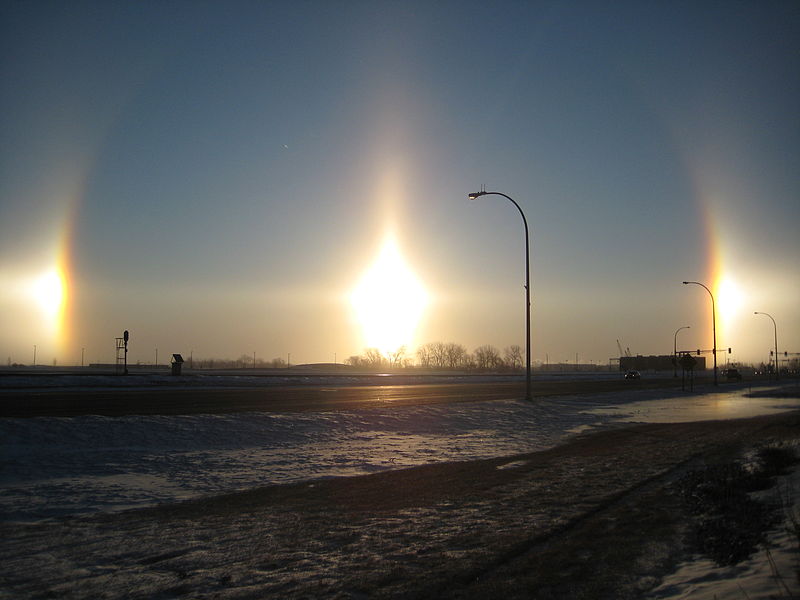 |
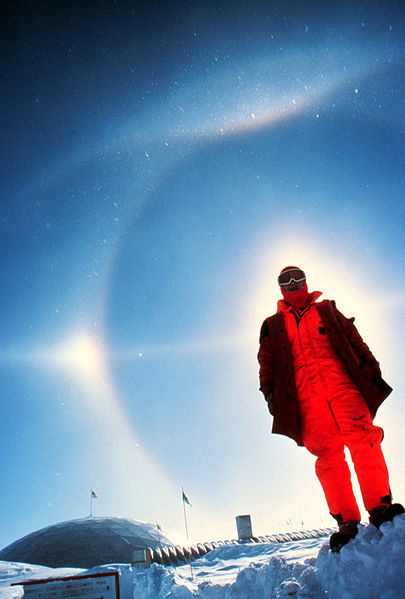 |

 |